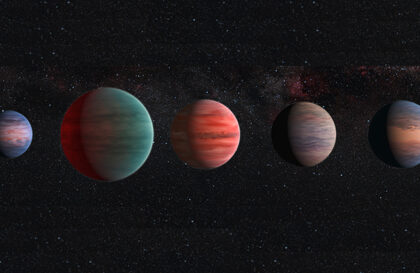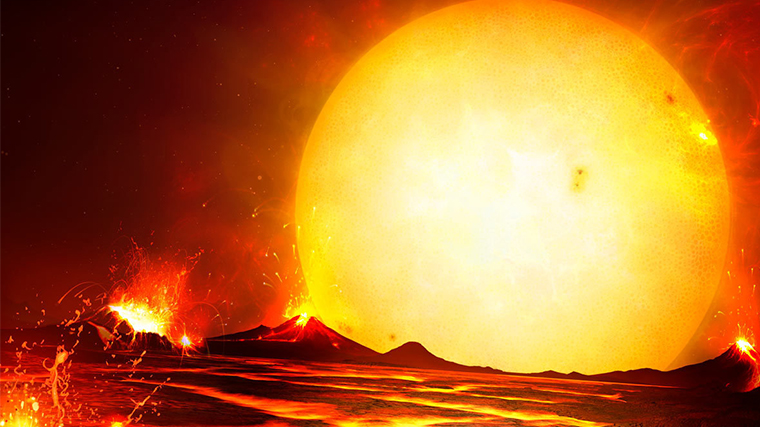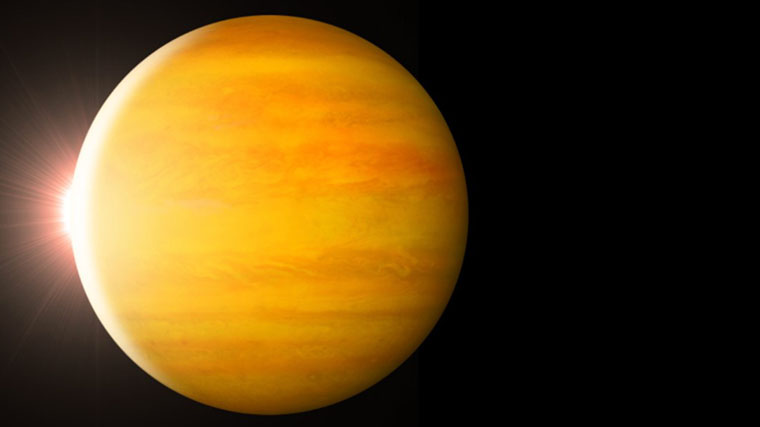A Planet That Breaks Down Into Atoms
Located 670 light-years from Earth, KELT-9b is the hottest of all known exoplanets. The daytime temperature on its surface reaches an astronomical 4600 degrees Kelvin, surpassing the temperature of some dwarf stars. This celestial object orbits its host star at a distance of just 0.034 astronomical units, and its year lasts only one and a half Earth days. Due to its astonishing heat and mass, which is 2.9 times greater than Jupiter’s, it is classified as an ultra-hot Jupiter. Such high temperatures cause molecules in the atmosphere to break down into individual atoms on the daytime side. The atmosphere contains hydrogen and gaseous metals like iron and titanium.
The Planet that is Being Consumed by Its Star
Astronomers using the Gemini South telescope in Chile, operated by NSF’s NOIRLab, have observed the first compelling evidence of a dying Sun-like star engulfing an exoplanet
(International Gemini Observatory/NOIRLab/NSF/AURA/M. Garlick/M. Zamani)
WASP-12b stands as one of the most fearsome and gigantic planets known. Its parent star is gradually consuming this celestial body. The planet orbits at an extraordinary speed and at such close proximity that it’s being eaten away by the star, shedding a staggering 6 billion tons of mass every second. Its proximity to its host star results in an extreme average temperature of 2200 degrees Celsius. The planet’s radius measures 127,970 km, and the intense heat from its star has warped it into an egg-like shape. A complete orbit around its star takes just 21 days. Situated an estimated 600 light-years from Earth, the planet’s atmosphere is being eroded at approximately 189 quadrillion tons per year due to the star’s gravitational forces. Experts estimate that WASP-12b has a lifespan of only around 10 million more years before being completely devoured by its star.
A Dark World in the Draco Constellation
Author: @nonnie192
TrES-2b is a gas giant roughly the size of Jupiter, located 750 light-years away from Earth in the constellation Draco. This exoplanet is so dark that it’s even darker than coal and the dark acrylic paints used in art. It absorbs over 99% of the incoming solar light, making it the darkest known planet. Due to the absence of reflective atmospheric clouds and extremely high atmospheric temperatures—exceeding 980 degrees Celsius—the planet often emits a red glow, resembling glowing coal or the red indicator light on an electric stove. Its distance from its host star is a mere 3 million miles (4.8 million kilometers).
Image credit:
https://www.google.com
https://www.independent.co.uk
https://ru.freepik.com






